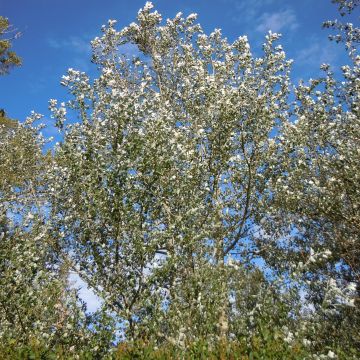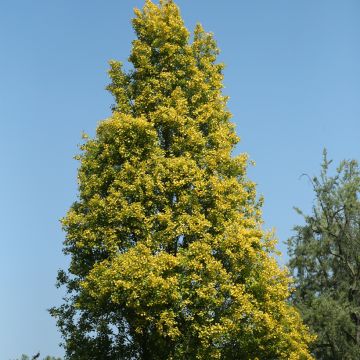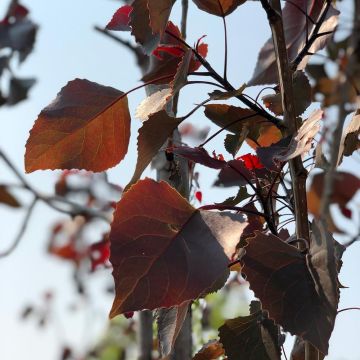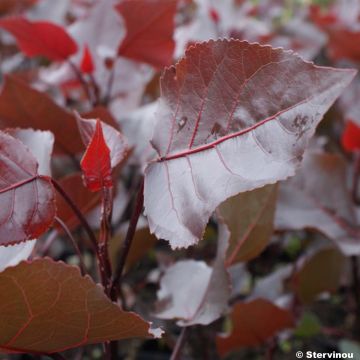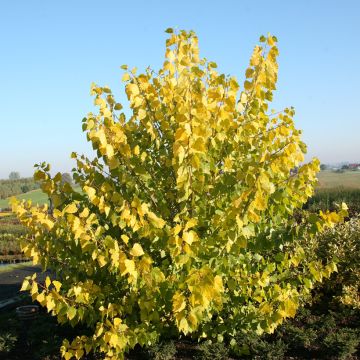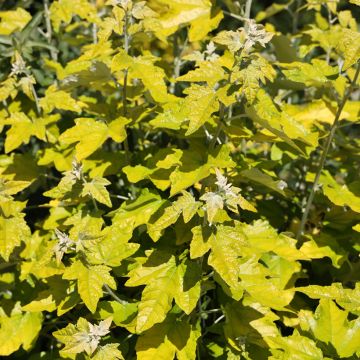Shipping country and language
Your country of residence may be:
Your country of residence is:
For a better user experience on our website, you can select:
Your shipping country:
-
Andorra
-
Austria
-
Belgium
-
Bulgaria
-
Canada
-
Chile
-
Croatia
-
Cyprus
-
Czechia
-
Denmark
-
Estonia
-
Finland
-
France
-
Germany
-
Greece
-
Hungary
-
Iceland
-
Ireland
-
Italy
-
Latvia
-
Lithuania
-
Luxembourg
-
Malta
-
Monaco
-
Netherlands
-
Poland
-
Portugal
-
Romania
-
Slovakia
-
Slovenia
-
Spain
-
Sweden
-
Switzerland
-
United Kingdom
We only deliver seed and bulb products to your country. If you add other products to your basket, they cannot be shipped.
Language:
-
French
-
German
-
Spanish
-
English
-
Italian
My Account
Hello
My wish lists
Log in / Register
Existing customer?
New customer?
Create an account to track your orders, access our customer service and, if you wish, make the most of our upcoming offers.
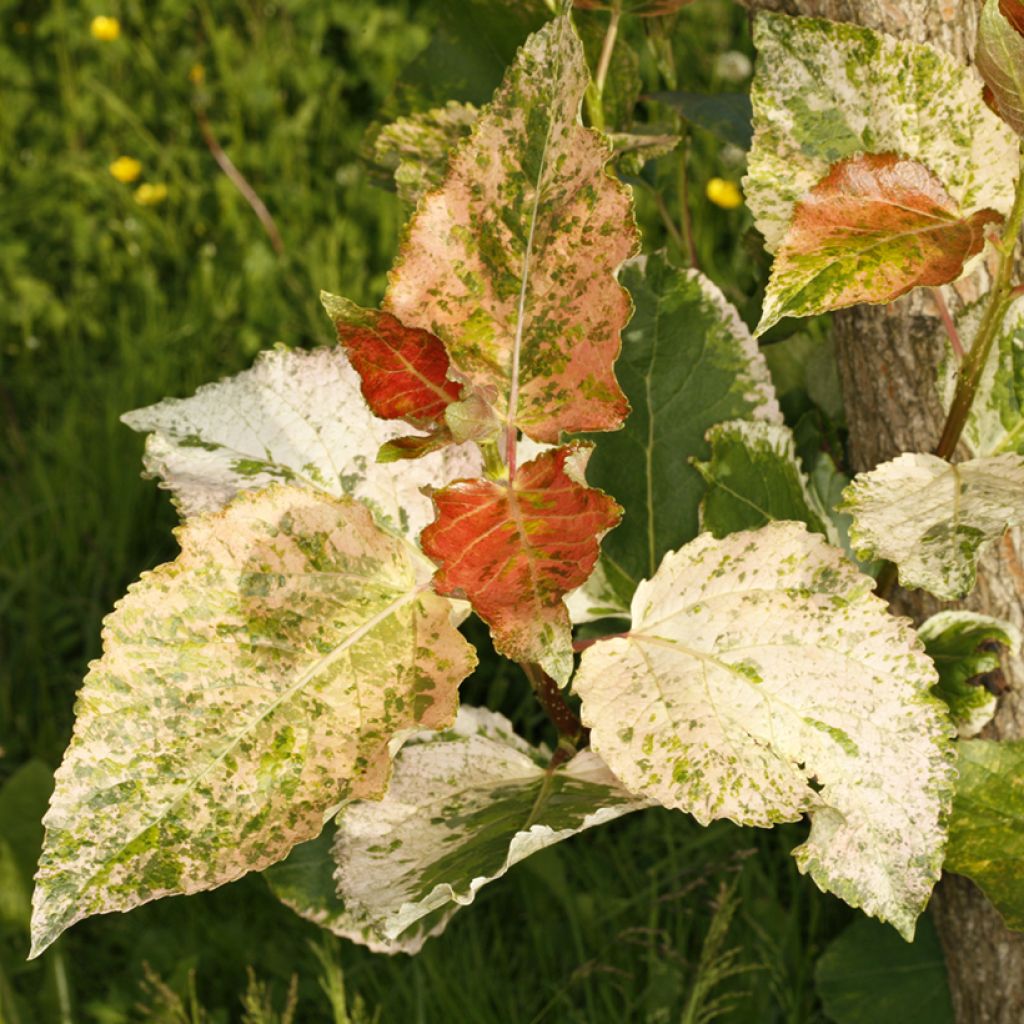

Populus x candicans Aurora - Balm of Gilead
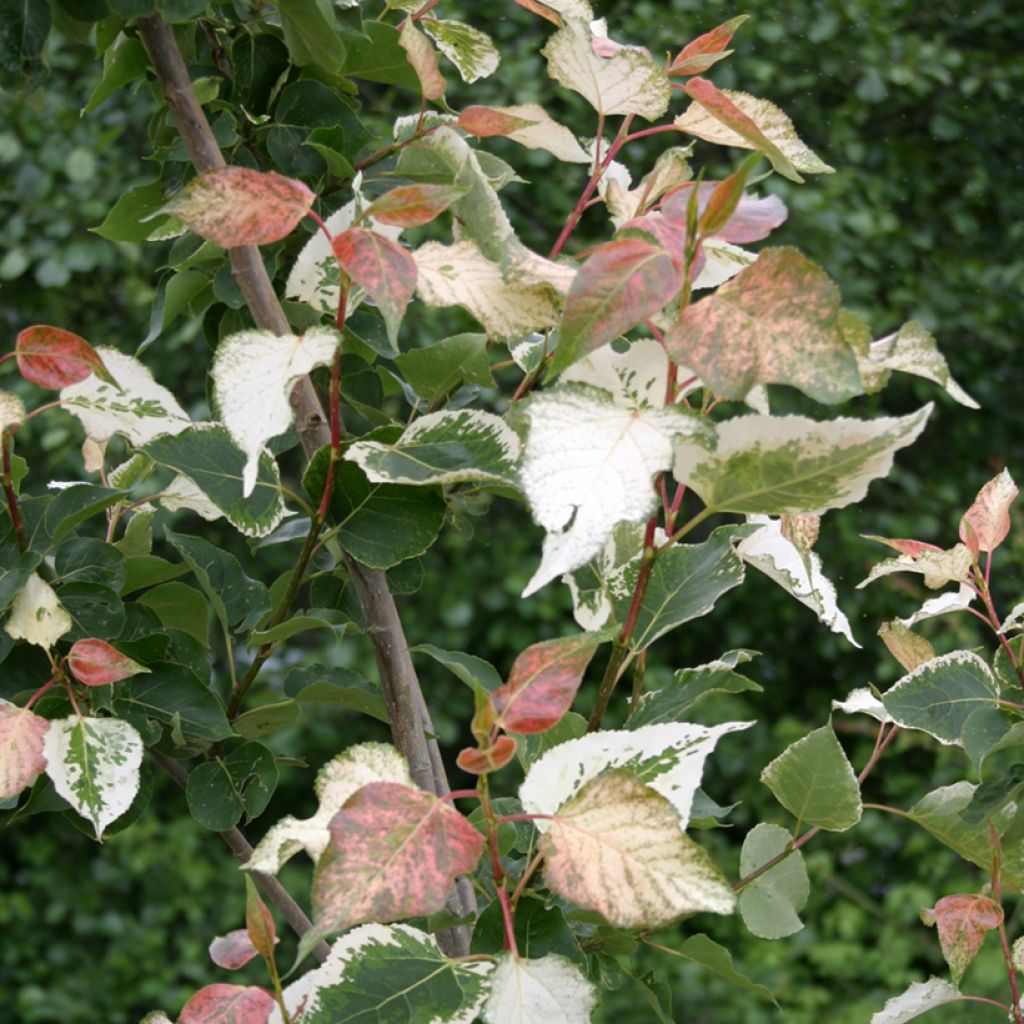

Populus x candicans Aurora - Balm of Gilead
Populus x candicans Aurora - Balm of Gilead
Populus x candicans Aurora
Balm of Gilead, Balsam Poplar
Why not try an alternative variety in stock?
View all →Order in the next for dispatch today!
Dispatch by letter from €3.90.
Delivery charge from €5.90 Oversize package delivery charge from €6.90.
More information
This item is not available in your country.
Schedule delivery date,
and select date in basket
This plant carries a 24 months recovery warranty
More information
We guarantee the quality of our plants for a full growing cycle, and will replace at our expense any plant that fails to recover under normal climatic and planting conditions.
Oversize package: home delivery by special carrier from €6.90 per order..
Express home delivery from €8.90.
Does this plant fit my garden?
Set up your Plantfit profile →
Description
Populus x candicans 'Aurora' is a variety of North American Poplar whose young foliage is beautifully variegated. It forms a medium-sized tree with an upright habit, often kept smaller by drastic pruning that allows for the renewal of its juvenile foliage to fully enjoy its colours. Its oval and pointed leaves are a shiny green washed with cream white and rosy bronze. This fast-growing, robust and accommodating poplar adapts to all soils that remain moist.
Populus x candicans is also known as Populus x jackii, Populus x gileadensis, Populus manitobensis. It belongs to the family of Salicaceae. Native to eastern Canada and northeastern United States, it is adapted to moist to wet soils and develops a very spreading and extensive root system, with a tendency to sucker. For this reason, it should be planted far from buildings (at least 15 m). Populus x candicans is a natural hybrid of P. balsamifera and P. deltoides, two species also found in the wild in North America. The first parent is highly appreciated for the fragrance of its sticky leaf buds and new leaves, an attribute it has passed on to P. x candicans.
'Aurora' stands out for its highly ornamental variegated leaves and relatively modest size. It reaches a height of 15 m at maturity and a width of 6 m with rapid growth. It develops an open crown and an overall upright shape with a vertical trunk. Its large heart-shaped leaves often start the season solid green, but quickly change as the shoots elongate and are generously splashed with cream white and often tinged with soft pink. Flowering takes place in March-April. The inflorescences are pendulous catkins: the male catkins, without peduncles, are reddish-purple, while the female catkins hanging on a peduncle are greenish-yellow. After wind pollination, the female trees bear fruits grouped in chains, with the cottony seeds being dispersed by the wind.
Populus x candicans 'Aurora' appreciates a rich and moist to wet soil. It responds well to severe pruning in late winter, which enhances the beautiful colouring of its foliage. Although its dimensions are smaller than other poplars, its tendency to sucker means that it is best reserved for gardens where it can be planted away from the house and pipes. It is perfect, for example, along rivers or near ponds and large natural ponds. It could be associated with alder, willow, and ash which also appreciate the proximity to water. Planted closely together, this tree can also serve as a large windbreak.
Report an error about the product description
Populus x candicans Aurora - Balm of Gilead in pictures


Plant habit
Flowering
Foliage
Botanical data
Populus
x candicans
Aurora
Salicaceae
Balm of Gilead, Balsam Poplar
Populus x jackii, Populus x gileadensis, Populus manitobensis,
North America
Other Populus - Poplar
Planting and care
Plant Populus x candicans Aurora in well-prepared soil that remains moist to damp. It requires a sunny exposure. This tree prefers riverbanks and alluvial valleys but it can tolerate normal soils in a well-watered climate. If necessary, perform maintenance pruning before the start of the growing season, removing diseased or dead wood and crossing branches. This variety may be subject to certain diseases (galls) without great severity. Poplar canker, caused by a pathogenic fungus, can be more virulent, especially in plants weakened by poor growing conditions (too dry or nutrient-poor soil).
Planting period
Intended location
Care
This item has not been reviewed yet - be the first to leave a review about it.
Haven't found what you were looking for?
Hardiness is the lowest winter temperature a plant can endure without suffering serious damage or even dying. However, hardiness is affected by location (a sheltered area, such as a patio), protection (winter cover) and soil type (hardiness is improved by well-drained soil).

Photo Sharing Terms & Conditions
In order to encourage gardeners to interact and share their experiences, Promesse de fleurs offers various media enabling content to be uploaded onto its Site - in particular via the ‘Photo sharing’ module.
The User agrees to refrain from:
- Posting any content that is illegal, prejudicial, insulting, racist, inciteful to hatred, revisionist, contrary to public decency, that infringes on privacy or on the privacy rights of third parties, in particular the publicity rights of persons and goods, intellectual property rights, or the right to privacy.
- Submitting content on behalf of a third party;
- Impersonate the identity of a third party and/or publish any personal information about a third party;
In general, the User undertakes to refrain from any unethical behaviour.
All Content (in particular text, comments, files, images, photos, videos, creative works, etc.), which may be subject to property or intellectual property rights, image or other private rights, shall remain the property of the User, subject to the limited rights granted by the terms of the licence granted by Promesse de fleurs as stated below. Users are at liberty to publish or not to publish such Content on the Site, notably via the ‘Photo Sharing’ facility, and accept that this Content shall be made public and freely accessible, notably on the Internet.
Users further acknowledge, undertake to have ,and guarantee that they hold all necessary rights and permissions to publish such material on the Site, in particular with regard to the legislation in force pertaining to any privacy, property, intellectual property, image, or contractual rights, or rights of any other nature. By publishing such Content on the Site, Users acknowledge accepting full liability as publishers of the Content within the meaning of the law, and grant Promesse de fleurs, free of charge, an inclusive, worldwide licence for the said Content for the entire duration of its publication, including all reproduction, representation, up/downloading, displaying, performing, transmission, and storage rights.
Users also grant permission for their name to be linked to the Content and accept that this link may not always be made available.
By engaging in posting material, Users consent to their Content becoming automatically accessible on the Internet, in particular on other sites and/or blogs and/or web pages of the Promesse de fleurs site, including in particular social pages and the Promesse de fleurs catalogue.
Users may secure the removal of entrusted content free of charge by issuing a simple request via our contact form.
The flowering period indicated on our website applies to countries and regions located in USDA zone 8 (France, the United Kingdom, Ireland, the Netherlands, etc.)
It will vary according to where you live:
- In zones 9 to 10 (Italy, Spain, Greece, etc.), flowering will occur about 2 to 4 weeks earlier.
- In zones 6 to 7 (Germany, Poland, Slovenia, and lower mountainous regions), flowering will be delayed by 2 to 3 weeks.
- In zone 5 (Central Europe, Scandinavia), blooming will be delayed by 3 to 5 weeks.
In temperate climates, pruning of spring-flowering shrubs (forsythia, spireas, etc.) should be done just after flowering.
Pruning of summer-flowering shrubs (Indian Lilac, Perovskia, etc.) can be done in winter or spring.
In cold regions as well as with frost-sensitive plants, avoid pruning too early when severe frosts may still occur.
The planting period indicated on our website applies to countries and regions located in USDA zone 8 (France, United Kingdom, Ireland, Netherlands).
It will vary according to where you live:
- In Mediterranean zones (Marseille, Madrid, Milan, etc.), autumn and winter are the best planting periods.
- In continental zones (Strasbourg, Munich, Vienna, etc.), delay planting by 2 to 3 weeks in spring and bring it forward by 2 to 4 weeks in autumn.
- In mountainous regions (the Alps, Pyrenees, Carpathians, etc.), it is best to plant in late spring (May-June) or late summer (August-September).
The harvesting period indicated on our website applies to countries and regions in USDA zone 8 (France, England, Ireland, the Netherlands).
In colder areas (Scandinavia, Poland, Austria...) fruit and vegetable harvests are likely to be delayed by 3-4 weeks.
In warmer areas (Italy, Spain, Greece, etc.), harvesting will probably take place earlier, depending on weather conditions.
The sowing periods indicated on our website apply to countries and regions within USDA Zone 8 (France, UK, Ireland, Netherlands).
In colder areas (Scandinavia, Poland, Austria...), delay any outdoor sowing by 3-4 weeks, or sow under glass.
In warmer climes (Italy, Spain, Greece, etc.), bring outdoor sowing forward by a few weeks.

